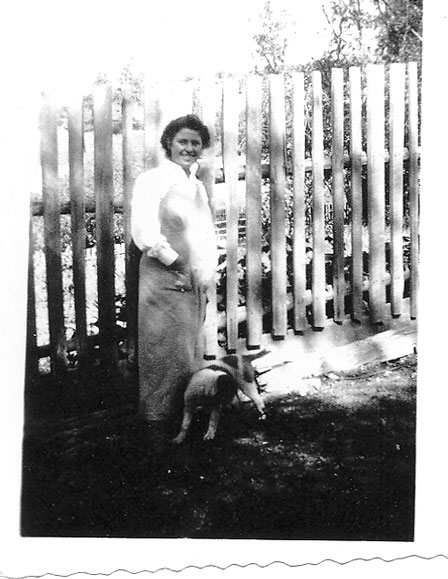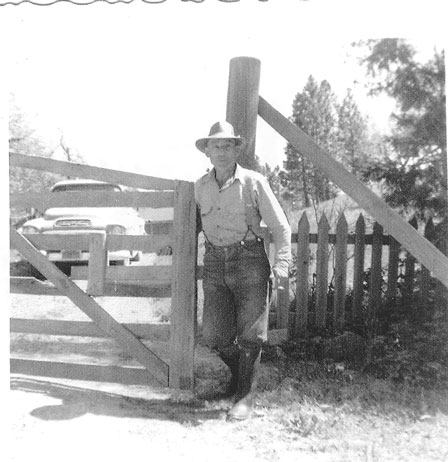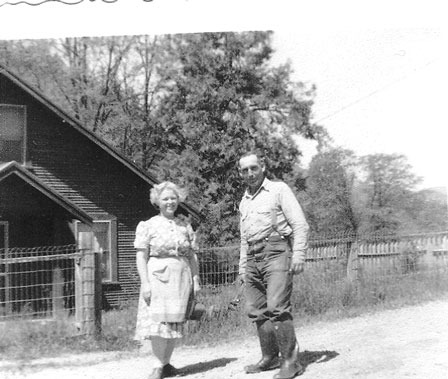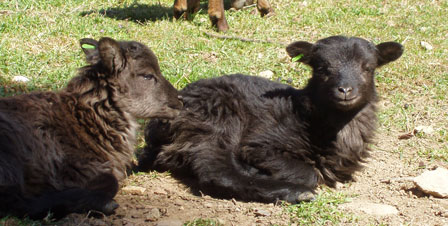Saltmarsh Soay Pioneers
One of the most enjoyable, ordinarily light-hearted rituals on our farm is the annual selection and implementation of lamb naming themes. This year, picking the right theme took on a certain solemnity as we welcomed lambs with the first-ever new genetics in the British Soay flock here in the U.S., thanks to the wonders of AI, the first AI done in this country with Soay sheep and the first-ever new genetics introduced to the North American-based Soay flock.
As you can imagine, selecting a naming theme for these historic sheep has occupied many hours around our dinner table, the hay feeders, and points in between for the last several months. One day as Steve walked the pastures, he had a small “Eureka” moment: why not name our Soay pioneers for members of the Saltmarsh family who settled here along the Little Applegate River in southern Oregon? It was the Saltmarshes, after all, who as earlier pioneers homesteaded and lived on our farm for nearly one hundred years.
Down off the bookshelf came the local histories. Some of the names were easy to identify. We presented our first draft list of names for review by our consultative body, which convenes each Wednesday for breakfast at the local cafe to discuss the weather and other urgent matters. To our delight, we learned that Melvin and Curtis Saltmarsh, sons of Arthur B. (“Bird”) and Dora, had been named after the father and uncle of one of our favorite breakfast companions, Jerry McGrew.
Connie Fowler, a close-by neighbor and co-author of a wonderful book about Buncom, a ghost town three miles down the road, provided a wealth of additional detail about the Saltmarsh “begats.” She also pointed out a couple of unsavory characters undeserving of a place on our list.
How we wish we had known the namesake, Genevieve Eliza (“Vieva”) Hamilton Saltmarsh, of our first AI ewe lamb, Saltmarsh Vieva. Here is the “real” Vieva as a happy, rosy-cheeked young bride, dressed in her overalls:

Vieva obviously engendered genuine affection and admiration from everyone she knew; we began hearing about her as soon as we purchased the Saltmarsh Ranch and we are still learning about her exploits during the decades she lived here. Vieva farmed right alongside her husband, Robert Glen Saltmarsh, shown here at the gate leading down to the barn.

Vieva also kept the local weather records for the U.S. weather bureau for many, many years. She was widely known for keeping a pet deer and protecting it from hunters by painting its antlers day-glow orange.
Here are Vieva and Glen in front of the farmhouse some years later.

The story goes that Vieva went to town the day after Glen died to buy the piano she had always wanted, becoming the first in the valley to have a piano at all. To this day, Vieva’s Sunday musicales are remembered here with fondness.
We are grateful to Vieva’s best girlfriend, Emily Savage of Montague, California, who found us a couple of years ago when she read an article about our Soay sheep in The Capital Press, for providing us with these photographs and for sharing wonderful memories of Vieva and Glen with us. Emily and her husband John also pioneered in our valley.
But back to the sheep. Here are our AI twins Glen (on the left) and Vieva, basking in the sunshine at Saltmarsh Ranch at the ripe old age of two weeks:

Earlier generations of Saltmarshes built the barn that still stands as a landmark in the valley over a hundred years later. Pictured on the home page of our website, the barn served as the nighttime home of our AI ewes throughout their pregnancy, keeping them safe from predators and dry during our wet winter.
We would like to think that Vieva, Glen, Cap, Bird, Arzie, Emmett, and all the other Saltmarshes would approve of the new turn of events on their homestead and in their valley. Who knows, perhaps one day we will paint our AI progeny’s horns with day-glow paint to keep them safe!
For now …